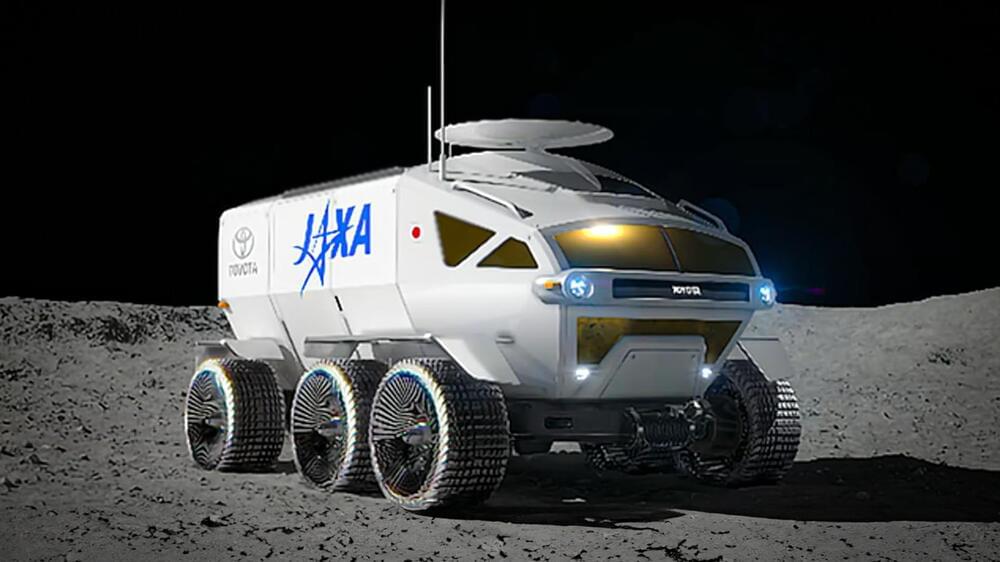I found this on NewsBreak: Scientists Discover Potential Interstellar Origins of Life on Earth.


SpaceX is preparing for upcoming Starship launches and is working on upgrading launch support infrastructure, but still needs FAA approval for the new launch schedule.
Questions to inspire discussion.
What upgrades is SpaceX making to the Starship launch support infrastructure?
—SpaceX is repairing and upgrading the infrastructure to improve vehicle landing, engine burn control, booster landing, heat shield tile security, and re-entry roll issues.


Haven’t posted in a while, my mother is not doing well, had to take her to the ER the other day, but this is important and I hope it sets a trend of cooperation.
When NASA returns to the Moon, its astronauts will enjoy tooling around in a pressurized camper van courtesy of JAXA and Toyota. The two-person vehicle is part of a US/Japan agreement that includes putting the first Japanese astronauts on the Moon.
It’s beginning to look like NASA’s program to establish a permanent human presence on the Moon will resemble a car show as much as it does a scientific expedition. The space agency recently awarded contracts to develop an open off road vehicle to carry astronauts around on the Moon, though these are small and the driver and passengers have to wear spacesuits. Meanwhile, the Japanese vehicle being developed by JAXA and Toyota is a mobile outpost where the crew can live and work for up to 30 days in a shirt sleeve environment.
No doubt while wearing loud Hawaiian shirts.
SpaceX is striving to create the most powerful and reliable rocket engine with the Raptor engine, which will revolutionize the aerospace industry Questions to inspire discussion What is the goal of the Raptor engine? —The goal of the Raptor engine is to exceed 700,000 lb of thrust and become the most powerful and reliable rocket engine.
SpaceX is making significant advancements in rocket technology, with the development of the new Raptor engine and the impressive reliability of Falcon 9 launches Questions to inspire discussion What updates have been made at the Boca Chica launch site? —The linkage arms, booster hold down clamps, and other components of the SpaceX Starship launch mount have been removed and reinstalled with some modifications, possibly in preparation for future launches.

Researchers at the University of Colorado Boulder have developed experiments to replicate the chemical reactions of the Interstellar Medium, using techniques like laser cooling and mass spectrometry to observe interactions between ions and molecules.
While it may not look like it, the interstellar space between stars is far from empty. Atoms, ions, molecules, and more reside in this ethereal environment known as the Interstellar Medium (ISM). The ISM has fascinated scientists for decades, as at least 200 unique molecules form in its cold, low-pressure environment. It’s a subject that ties together the fields of chemistry, physics, and astronomy, as scientists from each field work to determine what types of chemical reactions happen there.
Now, in the recently published cover article of the Journal of Physical Chemistry A, JILA Fellow and University of Colorado Boulder Physics Professor Heather Lewandowski and former JILA graduate student Olivia Krohn highlight their work to mimic ISM conditions by using Coulomb crystals, a cold pseudo-crystalline structure, to watch ions and neutral molecules interact with each other.

Finding water on distant planets and moons in our solar system is a challenge, especially when the instrument is thousands of kilometers away from the surface, but scientists presenting at the European Geosciences Union General Assembly describe how ground-penetrating radar is used to discover bodies of water below the surface of distant planets and they are on their way to Jupiter.
SpaceX is making significant progress in the construction and testing of their test stand systems and booster recovery operations, showcasing their operational prowess and efficiency. Questions to inspire discussion What progress has SpaceX made in test stand systems? —SpaceX has made significant progress in the construction and testing of their test stand systems, demonstrating their operational prowess and efficiency.
SpaceX The Space Race